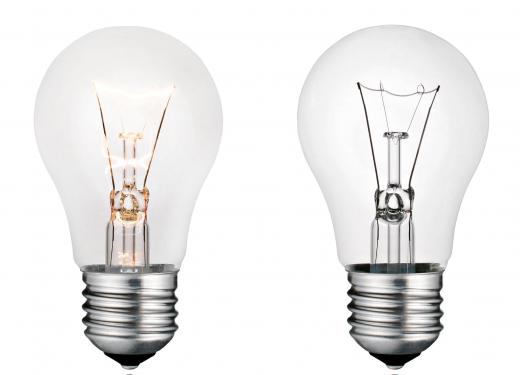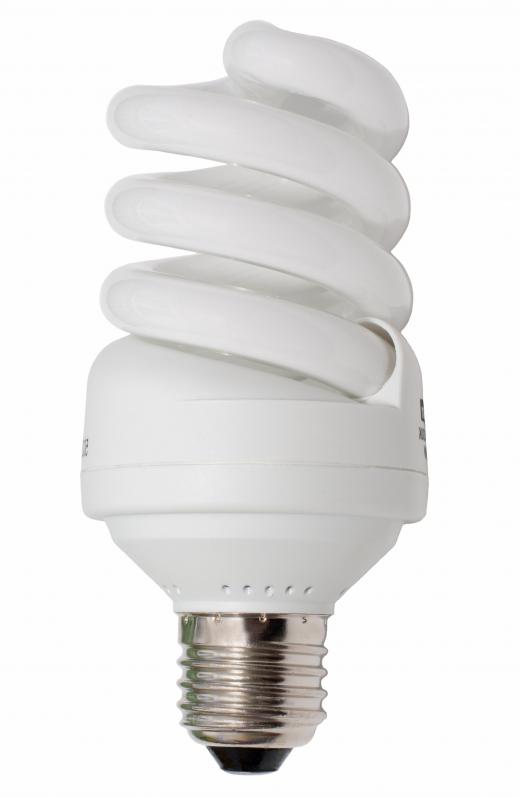The Edison screw is a type of fitting that is commonly used with light bulbs. Sockets designed for use with this type of fitting contain a center contact and a female screw receptacle, while bulbs have a male screw pattern on one end. The screw base forms one side of the electrical connection, and the center contact serves as the other. Edison screws can be manufactured in a range of sizes, and are typically referred to by the letter E followed by the diameter of the base as measured in millimeters. There are a number of competing bulb fixture designs, though the Edison screw is the most popular in the United States, much of Europe, and in other countries around the world.
When electric lighting was first invented, each lamp manufacturer tended to create its own proprietary fittings. Some used spring clips to hold the bulbs in place, while others used threaded studs or other designs. The Edison screw was originally introduced in the first decade of the 20th century and eventually became the most common light bulb base in the United States and other countries throughout the world. Other bulb fittings, such as the bayonet cap, are still popular in Europe and are also used in many 12 volt applications in the United States.

Each bulb that has an Edison screw base can be easily be defined by the size of that base. The common designation for bulbs with Edison screws is the letter E and a number that represents the size of the base. In the United States, the most common household bulb is the E26, which has a base with a diameter of 26mm (about 1.02 inches). A similar bulb, the E27, is typically found in European countries and other areas with 240v electricity.

There are many other sizes of Edison screws, though those that are typically used with 120v or 240v electricity fall into four general categories. Candelabra bulbs are typically the smallest and have a designation of E11 in the United States and E12 in Europe. Intermediate bulbs are E17 and E14, the E26 and E27 sizes are referred to as medium, and goliath or mogul bulbs are E39 and E40. Bulbs that have an Edison screw smaller than E11 or large than E40 typically have less common, specialized uses.
The Edison screw can also be used for direct current (DC) bulbs in devices such as flashlights and model trains, though bayonet cap and bi-pin bases are also common in these settings. Bulbs with screw diameters of 10mm (about 0.39 inches) and smaller are typically rated at less than 30v, unlike larger bulbs that can be used with 120v or 240v. There is also a variant on the Edison screw referred to as a three way bulb that contains two center contacts instead of one. These bulbs contain an extra filament with a lower wattage that can be used if installed in a compatible fixture.
